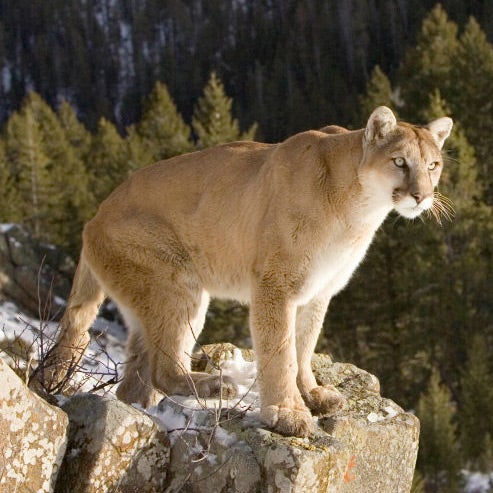Whether it’s by stinging, crushing, biting, butting, kicking, or any other variety of accidental or nefarious means, animals injure millions and kill hundreds of people every year. The Centers for Disease Control and Prevention () keeps a database of the fatalities. Dr. Joseph Forrester and colleagues pulled all of the agency’s statistics from 1999 to 2007, organized and analyzed what they found, and then wrote a paper—appropriately titled “.”
Some motivation to write the paper, which was published last June in , came from Forrester’s job as a general surgery resident. He sees small children who have been bitten in the face by dogs. And some motivation came from further afield: Forrester has with the help of his brother Jared, and the two have climbed mountains from Africa to South America.
“Whenever we are traveling in these areas, it is easy to let one’s mind drift and wonder, What if?” Forrester says. “Particularly with respect to aggressive animals. We wanted to see how our perception of animal-related fatalities corresponded to reality as defined by the CDC database.”
Some fascinating numbers that they found:
1,802: The number of animal-related fatalities that resulted from a bite, contact, attack, or envenomation in the United States from 1999 to 2007. On average, that’s 200.2 deaths per year. (What’s not included in that number: Over the same period, 980 fatalities resulted from accidents where people were riding on an animal or were in a vehicle pulled by an animal. The U.S. averages 217 fatalities a year due to crashes with animals. That average is taken from data collected by the between 2006 and 2010.)
84: The percentage of people who died that were Caucasian.
46.7: The percentage of deaths that occurred in the South.
5: The number of deaths that came from scorpions, which were the number 11 cause of death in the CDC database. (While some animals were separated out in the database, many animals were thrown into larger groups—as you’ll see below.)
The Top 10 deadliest animals:
10. Crocodiles and alligators caused 9 deaths.
9. Marine animals caused 10 deaths. The counts 8 fatalities from 2000 to 2007.
8. Venomous snakes and lizards caused 59 deaths.
7. Venomous arthropods that weren’t spiders, scorpions, centipedes and millipedes caused 63 deaths. “One known cause is fire ants in the South that can preferentially cause increased risk of death in the elderly and very young,” says Forrester. “Our data seems to support this with the majority of deaths due to other specified venomous arthropods occurring in the two older age groups and in the South region.” 80 percent of these deaths occurred among people 35 or older;��65 percent of these deaths occurred in the South.
6.��Venomous spiders caused 70 deaths.
5. Reptiles that weren’t venomous snakes and lizards, alligators, or crocodiles caused 77 deaths. “The CDC WONDER database casts a broad net again for this category (other reptiles) by including lizards and non-venomous snakes and the cause of death being bitten or crushed by the animal,” says Forrester. “Unfortunately, they do not specify the most common types of lizards or snakes.”
4. Nonvenomous insects or nonvertebrates caused 85 deaths. “Unfortunately the WONDER database is again somewhat vague here and does not provide a list of common offenders,” says Forrester.
3. Dogs caused 250 deaths. About 885,000 people a year require medical attention after being bitten by a dog. Each year, the U.S. loses $1 billion��as a result of injuries or deaths from dog bites.��34 percent of all deaths caused by dogs occurred to children younger than 4. The victim is usually the owner or a member of the owner’s family.
“To reduce these attacks, better education on dog behaviors and proper restraint of dogs around toddlers need to occur,” says Forrester. “The sad part about the animal attacks is that it seems like common sense, don’t keep children around potentially aggressive dogs unsupervised, but the reality is parents don’t seem to appreciate how terrible a dog bite to a child’s face can be.”
2. Hornets, wasps, and bees were responsible for 509 deaths. The yearly average was 79. 80.9 percent of those who died were men and 93.1 percent were people over the age of 35.
1.��Cats, cows, horses, pigs, raccoons, and other hoofed animals caused 655 deaths, and were all lumped into a category called “other mammals.” “We looked at previous papers regarding this category and it seems like the largest are most likely cows and horses,” says Forrester. “Unfortunately, we do not know the exact percentages, but the livestock majority seems to fit with which areas of the country have the most farms and farm workers.”


